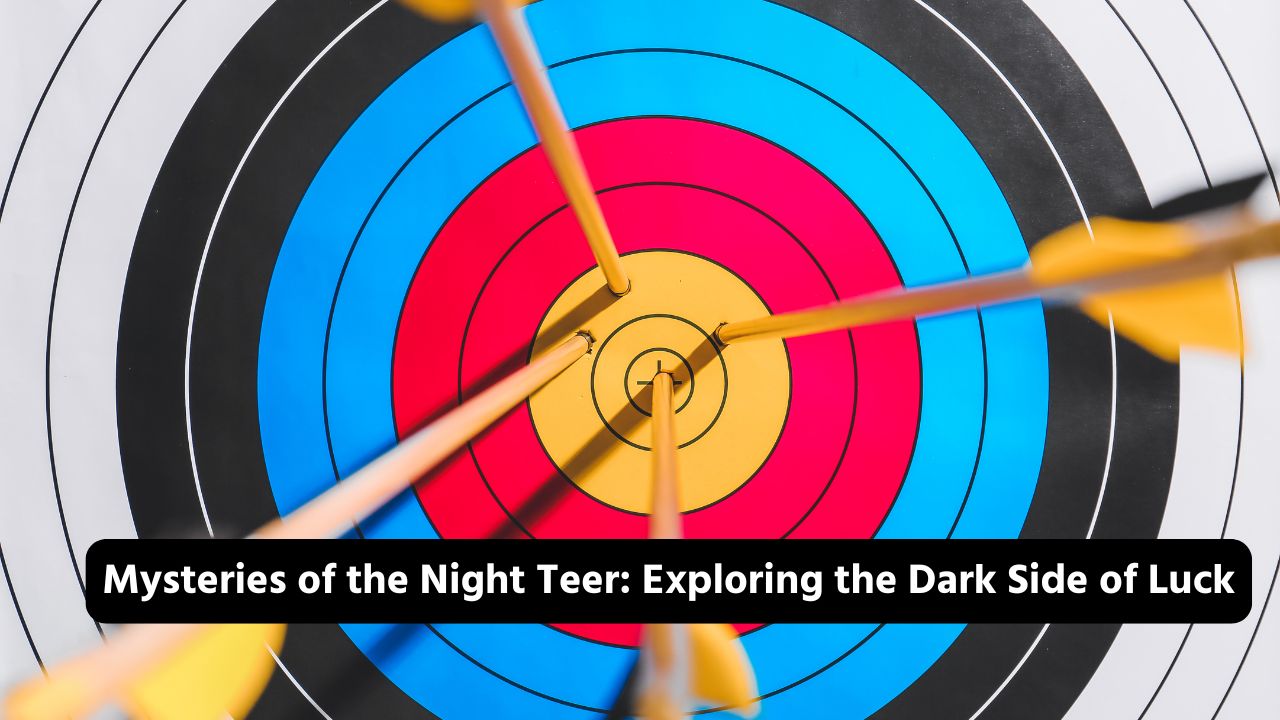Night Teer is more than just a game of archery and numbers; it’s a tradition deeply embedded in the cultural fabric of Meghalaya, India. Every evening, as the arrows fly and numbers are declared, hopes rise, fortunes fall, and the mysteries of the Night Teer unfold. Unlike conventional lotteries, Night Teer blends skill, strategy, and an element of mysticism that has fascinated players and observers alike.
However, this intriguing game also has a darker side—an undercurrent of risks, superstitions, and unpredictable outcomes that leave players grappling with the whims of fate. In this article, we will explore the secrets, cultural significance, and shadowy complexities of Night Teer, diving deep into the dark side of luck that surrounds this enigmatic game.
The Cultural Tapestry of Night Teer
Night Teer is not just a game; it is a cultural phenomenon. Rooted in the Khasi and Jaintia Hills, this game combines archery with numerical predictions. Players wager on numbers representing the count of arrows hitting a target, awaiting results that could change their fortunes overnight.
The social fabric of Meghalaya plays a crucial role in the appeal of Night Teer. Villages gather around teer counters, fostering a sense of community and shared anticipation. Yet, beneath this camaraderie lies a network of myths and beliefs. Many players rely on dream interpretations or “common numbers” whispered among seasoned bettors. This cultural dimension makes the game both captivating and mysterious, blurring the lines between tradition, sport, and gambling.
The Rules: A Game of Skill or Pure Chance?
At its core, Night Teer is deceptively simple. Archers aim at targets while spectators bet on the resulting numbers. However, the mysteries of the Night Teer emerge when we examine its unpredictability.
- The first round, or “F/R,” begins with 50 archers shooting 30 arrows.
- In the second round, or “S/R,” the count reduces to 20 arrows per archer.
- The number of arrows hitting the target determines the results.
While the outcome seems random, players often use dream analysis, astrological readings, and past results to guide their bets. This reliance on unscientific methods raises the question: is it a game of skill, or is luck the only determining factor?
| Aspect | Details |
|---|---|
| Number of Archers | 50 |
| Arrows in First Round | 30 |
| Arrows in Second Round | 20 |
| Betting Methodology | Dream analysis, past trends, instinctive guesses |
The reliance on chance highlights the fragile boundary between winning and losing, often exposing players to financial and emotional risks.
The Dark Side of Luck: Risks and Consequences
For all its cultural allure, the dark side of Night Teer cannot be ignored. Many players, lured by the promise of quick wealth, spiral into addiction. This obsession often leads to financial ruin, strained relationships, and emotional turmoil.
The local economy, too, faces challenges. While teer counters generate employment, they also attract illegal betting rings and unregulated practices. Government oversight struggles to curb the darker aspects of the game, leaving room for exploitation.
Additionally, the psychological toll on players is immense. The constant quest for lucky numbers fosters anxiety, and repeated losses create a vicious cycle of hope and despair. This darker narrative contrasts sharply with the communal joy often associated with the game, revealing a hidden cost to the pursuit of luck.
The Role of Superstition in Night Teer
Superstition is the lifeblood of Night Teer, fueling the game’s mystique. Players often consult dream interpreters or analyze symbolic events to predict winning numbers.
For instance:
- Dreaming of water might signify numbers like 7 or 27.
- A snake in a dream could represent the number 6.
- A broken object might hint at numbers ending in 0 or 9.
These beliefs add a layer of excitement but also perpetuate irrational decision-making. The reliance on such practices underscores the mysteries of the Night Teer, as players place faith in unquantifiable forces.
Superstition also fuels a thriving secondary economy, with books and guides promising to decode dreams and reveal lucky numbers. While this adds to the game’s cultural richness, it also blurs the line between entertainment and exploitation.
The Psychology Behind the Game: Why Does It Attract Millions?
The allure of Night Teer lies in its unpredictability. Players are drawn to the game for various reasons:
- The thrill of gambling.
- The hope of instant financial relief.
- The social connection fostered at teer counters.
However, the psychological effects are profound. Winning creates a dopamine rush, reinforcing the behavior. Conversely, losses trigger a need to recover, often leading to higher stakes and riskier bets.
The mysteries of the Night Teer are further magnified by its accessibility. With low entry costs and high rewards, the game appeals to people across socio-economic strata. Yet, this accessibility also increases the likelihood of addiction, particularly among vulnerable populations.
Strategies and Myths: Can You Outsmart the Game?
Despite its reliance on chance, many players attempt to “outsmart” the system by employing various strategies.
- Analyzing Past Results: Players study historical data to identify patterns, though no scientific basis supports this approach.
- Dream Interpretation: As discussed earlier, dreams often guide betting choices.
- Relying on Lucky Numbers: Some players stick to personal lucky numbers, hoping for a turn of fate.
However, these methods rarely yield consistent success. The dark side of luck lies in the illusion of control. Players invest time and resources in strategies that offer little more than fleeting hope, perpetuating the game’s enigmatic nature.
How Night Teer Impacts Local Communities
Night Teer has a dual impact on the communities it touches. On the positive side, the game generates revenue, promotes archery as a traditional sport, and creates jobs. Local artisans craft bows and arrows, while teer counters become hubs of activity.
Yet, the negatives are equally significant. Addiction strains families, and unchecked betting practices erode trust within communities. The mysteries of the Night Teer thus extend beyond individual experiences, shaping the social and economic landscape of Meghalaya.
Balancing the Light and Dark of Night Teer
The enigmatic world of Night Teer is a blend of tradition, entertainment, and risk. Its cultural significance cannot be understated, nor can the challenges it poses. To fully appreciate the game, one must embrace both its light and dark sides.
Key takeaways:
- Night Teer is a game that intertwines skill, chance, and superstition.
- It holds immense cultural value while also posing social and psychological risks.
- Understanding its complexities requires a balanced perspective, acknowledging both its allure and its darker implications.
| Positive Aspects | Challenges |
|---|---|
| Promotes traditional archery skills | Leads to addiction and financial loss |
| Generates local employment | Encourages unregulated betting |
| Strengthens community ties | Strains relationships and mental health |
Conclusion: A Game of Shadows and Hope
The mysteries of the Night Teer embody the paradox of human experience—a dance between hope and despair, strategy and superstition, community and isolation. For players, it offers a fleeting chance to change their fortunes, but at a cost that often goes unnoticed.
As we explore this fascinating world, one truth becomes clear: Night Teer is not just a game; it is a mirror reflecting the complexities of luck, culture, and human ambition. Whether it’s a path to prosperity or a gamble with destiny, the dark side of luck will always remain an intrinsic part of this captivating tradition.

